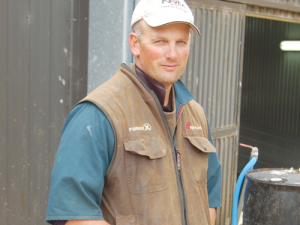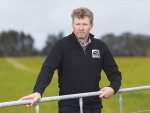Farmers in Waikato face bills of up to $750,000 to comply with a proposed plan to improve fresh water quality.
A report – the Farm Plan Project -- by Federated Farmers, Fonterra, DairyNZ, the Foundation for Arable Research and Waikato Regional Council says some high country farmers face whopping bills for fencing and water reticulation.
The Healthy Rivers Plan proposed by the council seeks to improve water quality in the Waipa and Waikato rivers by managing the nitrogen, phosphorus, sediment and bacteria entering waterways. Submissions on the proposed plan close at 5pm on March 8, 2017.
Feds wants the plan substantially revised. Waikato president Chris Lewis says the Farm Plan Project was intended as a snapshot of where the Healthy Rivers Plan’s impact would be greatest.
The project did case studies of 13 mainly drystock farms; Fonterra did a similar exercise on 11 of its supplier farms.
“It has been a very useful exercise,” Lewis says. “This report has given us practical experience of how the proposed plan would roll out. Now that we know what the issues are, we will be making strong submissions to council, and calling for substantial revision of parts of the policy.”
Lewis says the farms selected for Feds’ study represented a variety of land uses, farm types, catchments and geographic areas.
Feds’ overall concern was that some farmers, even if they wanted to comply, wouldn’t be able to afford it. In particular there are worries that drystock farms in hill country would find it too costly or difficult to fence all waterways.
Report results suggest the average cost of preparing a farm environment plan would be $4692, and the cost to implement the Healthy Rivers/Wai Ora plan ranged from $0 to $785,687.
For example, a drystock farm on steep country allowed for $479,138 in fencing costs to install an 8-wire post-and-batten fence over 21.8km. While Schedule 1 (development of farm environment plans) provides for other options where fencing land over 25 degrees is not practical, Schedule C (requirements for stock exclusion) does not.
In this example, under the proposed plan the landowner would need to provide water for stock that now drink from waterways, at an estimated cost of $173,000. Other mitigation included three wire fencing, waterway crossings and planting for erosion control, taking the total cost to $306,549.
Depending on the plan’s interpretation the costs to this farm could be $306,549 to $785,687.
Regional council chief executive Vaughan Payne says the project identified discrepancies between the schedules in the proposed plan; these are open to interpretation, leading to widely varying onfarm costs.
“This type of information is exactly why we are testing the implementation of Healthy Rivers/Wai Ora onfarm. This information is invaluable for the submission process and will help with the council’s implementation planning, once the new rules take effect,” says Payne.



















